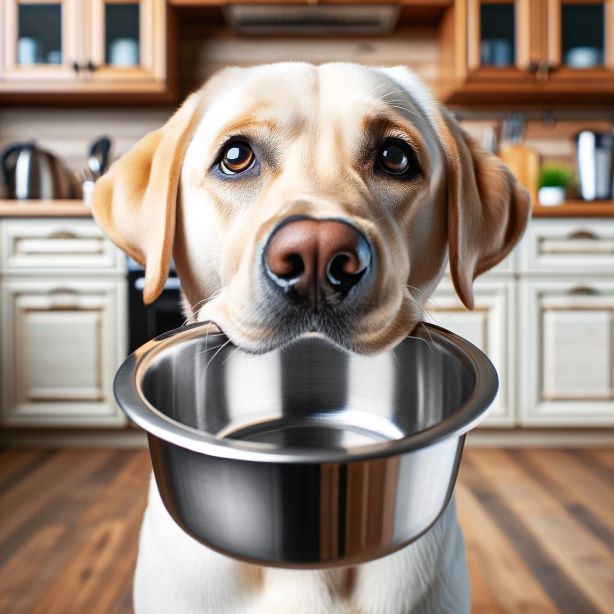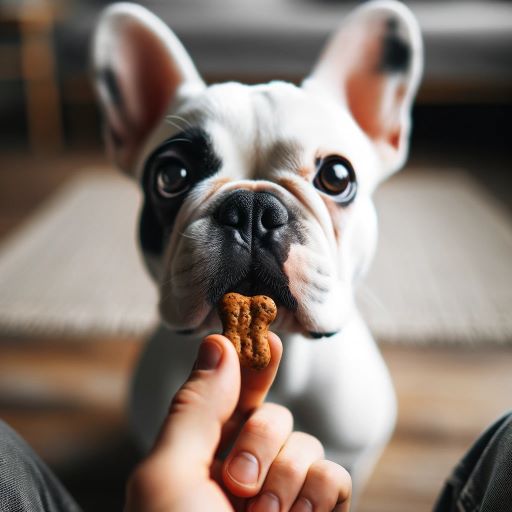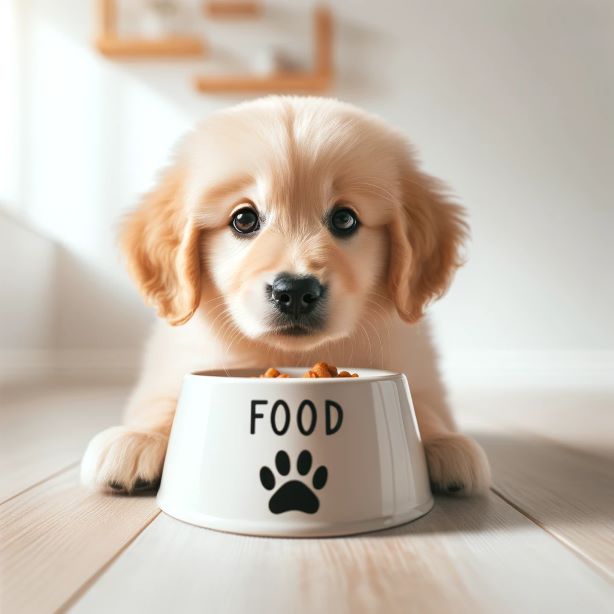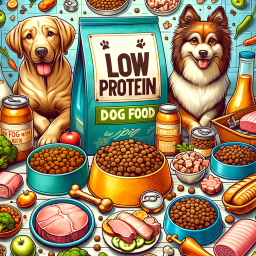how much to feed a dog to remain healthy

You will agree with me that every new or once new dog owner like me has this question – how much to feed a dog? – popping in front of their heads throughout their dog’s life cycle.
It’s quite important to know when you are overfeeding or underfeeding your dog. We all want our dogs healthy. A healthy dog is one playful, happy dog.
And in today’s post, I’ll be sharing tips on how much your dog should be eating based on weight and varying sizes because of some breeds
I remember when I got Bruno, a kind and super curious Labrador named after my really fun but goofy uncle Benedict.I could have sworn that I would make him sick without knowing just how much food he should eat daily and the proportion of nutrition in his meals.
Well:
As many of you guys, I didn’t know jack about it. But today, Bruno has got a healthy feeding schedule. As an average dog owner like me, here’s how to go about yours.
Feeding your dog has no one perfect answer as it depends on quite a number of factors such as your dog’s age, size, breed, diet needs, preference, metabolism, and activity level.
Here are some basic dog feeding guidelines to help you feed your dog based on certain qualities;
- How often to Feed a dog per day
- How much to feed a dog
- How much to feed a dog by weight
- How much to feed a large breed dog
- How much to feed a small dog
- Conclusion
How often to Feed a dog per day
As a dog owner, this is a basic question that could make or break your dog if you aren’t careful about it. Just as we humans have diet and times of eating and for eating a certain food, so do our dogs.
A good feeding schedule and a nutritious diet can keep your dog upbeat always.
Many experts out there advise that dogs should be fed at least two meals [1]per day. Although this is not set in stone as some dogs may require more recurring meals, depending on their breed, health, and age as aforementioned.
Puppies, however, should typically be fed three or more per day unlike adult dogs because they need the nutrients and energy to grow up into healthy dogs.
Small breed dogs require small portioned but frequent meals throughout the day too. Dogs with medical issues, special dietary needs, or feeding restrictions may require specialized feeding schedules.

Here’s a sample dog feeding schedule for adult dogs:
- 7:00 a.m. – Breakfast
- 6:00 p.m. – Dinner
For puppies, they should be fed preferably at the same time every day. Here’s a time sample:
- 7:00 a.m – Breakfast
- Noon – Lunch
- 5:00 p.m. – Dinner
Bear in mind that the last feeding should be kept constantly at around the 5 o’clock mark. That way the puppy has enough time to digest the food and excrete one last time before hitting the hay.
Once puppies are 6 months of age, feeding can be reduced to twice daily. As the growth slows down, reduce the size of food accordingly.
How much to feed a dog

Most new dog owners often follow the recommendations on dog food bags to know how many cups of food to feed their puppies
Which isn’t so bad, is it?
But it’s not completely precise.
The suggestions on food bags are based on an average puppy who does a normal amount of activity and dog vary in breeds which affects many basic things before taking any feeding decision for your dog.
The precise amount of food you should feed your dog will vary as it largely depends on his age, size, and activity level, as well as on the type of food he’s eating.
A general rule of food quantity shows that puppies and young dogs burn more calories, hence they need a larger quantity of food that is higher in protein and fat. However, older, less active dogs require fewer calories to remain healthy.
The best approach is to talk to your veterinarian about your dog’s breed to make sure you understand the peculiar body behavior of your dog, weight, feeding technique to use or combine as well what to feed your dog so you don’t end up harming his health in the long run.
How much to feed a dog by weight

What does weight have to do with feeding your dog?
Weight is one of the most spots-on ways to judge how much to feed a dog. Surely, you don’t want your dog to be overweight or obese.
It’s estimated that 45% of all U.S. dogs are either overweight or obese.
That’s a huge 35 million dogs right there. As alarming as that is, using your dog’s predicted adult weight gives you the right measurements to gauge his food daily and keep an eye on his health.
To feed a dog by weight, you must know how many calories are in a cup of food. After this you ensure you feed the dog according to those calories. Make sure you use an 8-ounce measuring cup, not a coffee cup.
Here’s a dog feeding chart detailing daily food measurements you can use to serve your dog;
| Dog weight | Daily amount of serving |
|---|---|
| 3 lbs | 1/3 cup |
| 5 lbs | 1/2 – 5/8 cup |
| 10 lbs | 3/4 – 1/2 cup |
| 15 lbs | 1 cup |
| 20 lbs | 1 1/4 – 1 ¾ cups |
| 40 lbs | 2 1/4 – 3 cups |
| 60 lbs | 3 – 4 cups |
| 80 lbs | 3 2/3 – 5 cups |
| 100 lbs | 4 1/4 – 6 cups |
The table above is the recommended amount of food that should be given to dogs daily. It’s a basic healthy amount.
However, don’t forget to divide the amount by at least three to four meals for puppies and at least two meal parts for adult dogs.
The measurements can be adjusted based on a dog’s daily activity, life stage, lifestyle, body condition, and appetite. Active puppies should definitely be given a little more food as compared to inactive puppies.
How much to feed a large breed dog
Large breed dogs, often, described as being devoted, loyal, affectionate, playful, energetic, alert, intelligent, adventurous and obedient, typically weigh between 50 to 100 pounds. These dogs require special attention when it comes to feeding.
Large puppies grow quickly and keep growing longer than smaller dogs.
Hence, it is important to slow their rate of growth down as regular puppy food can cause a large dog to grow too quick, and hulk out early, leading to health problems, giving them aches and pains in a dog that could already have a short life span.
So:
While feeding your large breed dog, the calcium content mustn’t be high as your dog may suffer from skeletal deformities if the food contains too much calcium.
As such, food for your large breed dog should contain between 0.7 and 1.5% calcium content.
Unlike small breed dogs that have faster metabolisms, your large breed dog has a slower metabolism and a big appetite.
Large dogs like the Afghan Hound and Airedale Terrier usually weigh between 50 and 70 pounds and need dry food up to 1.5 to 3 cups daily.
You can also mix wet food with your dog’s dry food which helps with hydration depending on your dog’s diet as long as you stick to the required daily calorie intake.
You can start by giving your large dog dry food in the morning and wet at night, but you can change the timing to however it suits your dog.
Here’s a table of Large breed dog weights and serving per day including the calories of each serving:
| Large Breed Dog Weight | Serving Per Day(Calories) |
|---|---|
| 50 lbs | 2 2/3 cups (1145 calories) |
| 60 lbs | 3 cups (1313 calories) |
| 70 lbs | 3 1/2 cups (1474 calories) |
| 80 lbs | 3 3/4 (1629 calories) |
| 90 lbs | 4 1/4 (1779 calories) |
| 100 lbs | 4 1/2 ( 1926 calories) |
Dogs like mastiffs, Great Danes, and St. Bernards can be considered extra-large, weighing well upwards of 75 pounds. Such dogs require between 2 cups and 4 cups of dry food per day.
In order to maintain your large dog’s whole health, you should combine a healthy portion of physical activity with the appropriate amounts of the following nutrients:
- Proteins: Made up of amino acids, building blocks of strong muscles and body tissue repair. Large breed dogs can only create half the amino acids they need, the rest must be gotten from their diet.
- Fats & oils: Large breed dogs need a good balance of certain fatty acids included in their diets. They provide energy, flavor, and taste.
- Vitamins/minerals: Vitamins to support your large dogs’ immune system and minerals help the body perform certain biological functions and avert deficiencies.
- Carbohydrates: Source of energy, gives fiber and provides texture and structure.
How much to feed a small dog

So you have a small breed dog and are perturbed about how much to feed him.
Small Breed dogs are little in size, but these dogs need and use tons of energy than large breed dogs.
They weigh between 10 and 20 pounds while toy breed dogs, a smaller breed of dogs weight between 3 to 6 pounds.
In other words:
They have smaller stomachs obviously and food given to them should be properly measured for their weight.
Small breeds need food packed with abundant calories. If a small breed dog does not have a high enough caloric intake they could develop hypoglycemia which can lead to weakness, seizures, and muscle tremors.
Toy Fox Terriers, Papillons, and Pomeranians are very small breed dogs that commonly weigh between 6 to 7 pounds and because these dogs are quite small, they eat less food unlike many other dogs including those that weigh above 10 pounds. Such dogs should be fed between 1/4 cup to 3/4 cup of food per day.
However, if your dog is a very active toy breed, you may feed him as much as 1 cup of food per day.
Small breed dogs like the Japanese Chin, Australian Terrier and others that commonly weigh between 10 and 25 pounds should be fed between 3/4 cup to 1 cup of food per day.
In case you intend to feed or feed your dog twice daily, give him about 1/2 cup of food for each meal. You can mix wet food with your dog’s diet simply by reducing the dry food by half and replacing it with wet food.
When deciding which brand of dog food to get for your small dog, here’s a quick list of what you should be interested in:
- High calories: Small dogs need more calories because they have fast metabolisms and higher energy levels.
- Vitamin B: Food with vitamin B drives the metabolism of your dog and help your dog process the calories present in his food.
- Easy digestion: Small breeds have delicate digestive tracts so they need food that will be easy to digest. It’s a good idea to look for a dog food that has pre and probiotics to aid in digestion and no artificial ingredients that can lead to stomach problems.
- Complex carbohydrates: Small breed dog food should have different complex carbohydrates from, fruits, vegetables and whole grains to keep your dog’s energy high.
- Small kibble size: Small breeds have very small mouths and jaws, so they need a kibble that is sized so they can actually eat it.
Conclusion
Once you know how your dog’s body reacts to food, his/her digestion rate, activity level, health condition, etc, it’ll be much easier to work out a great feeding schedule with the nutrients your dog needs.
There are other factors that can be considered while creating a feeding schedule for your dog such as your dog’s sleeping habit and health condition.
Dogs enjoy routine very much so your dog will quickly get used to the feeding schedule.
it’s important to keep track of the times you feed your dog and become diligent about keeping the same feeding times so you don’t break the process.
Don’t forget that a healthy feeding schedule for your dog can go a long way in ensuring your dog is fit as a flea.
Always serve your dog’s food and water in clean bowls always and don’t change your dog’s diet or food brand abruptly. Dogs need some time to adjust to a new diet. It should take a dog a minimum of six days and could be even more time to adjust to a new diet.
So, hey, you and I don’t know all about our dogs, that’s why there are vets. Seek out one if and when you notice any change in your dog’s eating pattern, food allergies, digestion or anything else.
Like it? Share it!
faq
Q: How much food should I give my dog each day?
A: The amount of food depends on the dog’s age, size, breed, activity level, and the type of food you’re giving. As a general rule, dogs should be fed according to their weight. Check the feeding guide on your dog food’s label as a starting point and adjust as needed.
Q: Does the feeding amount vary by dog breed?
A: Yes, different breeds have different metabolic rates and energy levels. For instance, active breeds may require more food compared to more sedentary breeds.
Q: Should I feed my dog once or multiple times a day?
A: Puppies generally need to be fed three to four times a day. For most adult dogs, twice a day is sufficient. Feeding your dog at the same times each day is recommended.
Q: How do I know if I’m feeding my dog too much?
A: Overfeeding can lead to obesity. A healthy dog should have a visible waist and you should be able to feel (but not see) its ribs. If your dog seems overweight, consult your vet for a tailored feeding plan.
Q: How should I adjust food quantities as my dog grows?
A: Puppies need more calories and nutrition for growth. As they become adults, their caloric needs decrease. Senior dogs may need even fewer calories, depending on their health and activity.
Q: What if my dog is more active than usual?
A: More active dogs may require more food to maintain their energy levels. However, it’s essential to increase their food gradually and ensure it’s balanced with their activity level.
Q: Should I change how much I feed my dog if it’s pregnant or nursing?
A: Yes, pregnant and nursing dogs require more calories and nutrients. Consult your vet for specific dietary recommendations during these stages.
Q: Should I mix wet and dry food?
A: Yes, you can mix them. This can provide a balance between palatability and convenience. Ensure the combined caloric value aligns with your dog’s dietary needs.
Q: Is it okay to give my dog table scraps?
A: It’s generally not recommended as it can lead to bad habits, obesity, and health issues. If you do, make sure the scraps are safe for dogs and only make up a small percentage of their diet.
Q: My dog has health issues. Does this affect how much they should eat?
A: Health issues can impact dietary needs. Dogs with certain conditions may require special diets or feeding routines. Always consult with your vet for a diet plan suited to your dog’s health needs.
Q: How do I manage feeding multiple dogs with different dietary needs?
A: Feed them separately to ensure each dog gets the right amount of food. Measuring meals and monitoring each dog’s intake is crucial.
Q: Does the type of food affect how much I should feed my dog?
A: Yes, caloric densities vary between wet and dry food. Wet food often contains fewer calories per gram compared to dry food, so you may need to feed more volume-wise.
related posts
Read more: Can Dogs Eat Sweet Potatoes? all you neeD TO know
Read more: healthy treats for diabetic dogs
Read more: Why Do Dogs Like Peanut Butter?





